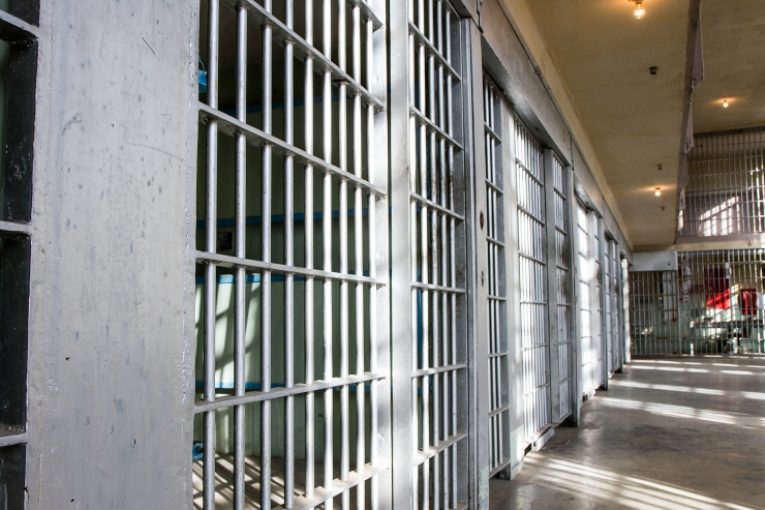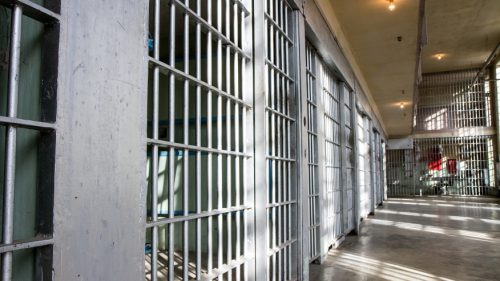

By Paloma Sifuentes, Michael McCutcheon and Emily Saroyan
WASHINGTON, DC – A half century ago, in 1973, the U.S. “embarked on a path of mass incarceration that has led to a staggering increase (500 percent) in the prison population” leading to nearly two million people “disproportionately Black Americans…incarcerated in our nation’s prisons and jails,” according to a report by the Sentencing Project.
“Mass incarceration instigates poor physical, psychological, and economic outcomes for the people who experience imprisonment, for their families, as well as for the broader community. Imprisonment leads to declining prospects for employment and results in lower earnings in the longer term. Food insecurity, housing instability, and reliance on public assistance are also associated with prior imprisonment,” the Sentencing Project writes,
Dr. Nazgol Ghandnoosh writes in the Sentencing Project report that in 2021 the prison population decreased by 25 percent since the peak of incarceration in 2009.
However, he adds the 1.2 million people who were incarcerated during 2021 is six times the number of incarcerated individuals 50 years ago, where “we started to see a growth in prison population. The U.S. has been and still remains as the nation with the largest prison population, more than any other country.”
The SP notes that if the prison population number decreased from now to that of the inmates in 1972, then it would take up to 75 years to do so. This is due to the 2.3 percent annual decarceration in the country.
The Sentencing Project and a coalition of advocates, experts, and partners have announced the launch of a new “public education campaign, 50 Years and a Wake Up: Ending The Mass Incarceration Crisis In America.”
“The campaign raises awareness about the dire state of the criminal legal system in the country, the devastating impact of incarceration on communities and families, and proposes more effective crime prevention strategies for our country,” the coalition explains.
A system that violates human rights, diverts resources from public safety investments, and is racially biased should not take seven decades to change its methods, the SP asserts, and policymakers must start by lowering sentencing rates, for the accused and those already incarcerated.
And, they must take a second look at inmates sentencing length is another step that authorities need to take. In order for the U.S. to deal with increases in crime while also lowering the rates of incarceration. Reforms and policies need to be put in place for safety investments.
The report notes that the prison population grew an average of 5.8 percent annually between the years of 1972 and 2009 but is decelerating at an average of 2.3 percent, only half the growth rate, although, because of Covid, there was a 14.1 percent drop in 2020. In 2021, the decarceration rate was 1.9 percent.
In order to decrease the level of imprisonment from now to the rate in 1972, the report said the U.S. would need a 87 percent reduction in prison population since the peak in 2009. The U.S youth justice system had made tremendous progress in reducing individuals in custody, writes the SP, and Justice Juvenile facilities had a 77 percent decline with 109,000 individuals in 2000 to 25,000 in 2020.
The report explains some states have also worked on reducing their prison population, such as New York, New Jersey and Connecticut who have reduced 50 percent of inmates since their peak levels. 27 states have reduced 25 percent of their prison population since their peak levels, and the federal prison had a 27 percent decrease since their peak in 2011.
Still, the report found Black men are six times as likely to be incarcerated as white men and Latinx men are 2.5 times as likely. Nationally, one in 81 Black adults in the United States is serving time in state prison.
And youth were swept up in mass incarceration’s harmful policies, particularly Black and Latinx children. During the peak year, more than 11,000 youth under age 18 were living in jails and prisons, said the Sentencing Project.
“The social, moral, and fiscal costs associated with the large-scale, decades-long investment in mass imprisonment cannot be justified by any evidence of its effectiveness. Misguided changes in sentencing law and policy – not crime – account for the majority of the increase in correctional supervision,” the report said.
The authors note some policymakers and jurisdiction are deterring the rates of decarceration by expanding incarceration levels and overcrowding. Alabama plans to build a new prison, rather than reducing an overcrowded prison system. The state is also being sued by the government for violating constitutional rights in their prison. Tennessee state legislators also expanded their “truth in sentencing law” which makes it that an inmate serve their sentence time 100 percent.
The impact of mass incarceration, the Sentencing Project charges, on public safety, shows that the pace of decarceration is dramatically slow in some states and some of their jurisdictions are also deterring any improvements being made. Since their peak levels Nebraska, Arkansas, North Dakota, Montana and Iowa have only reduced their prison population by 10 percent, the Federal prison system expanded by three percent in 2021.
The Sentencing Project reports towards the end of 2019 crimes reported to authorities dropped to half of their 1990s level. However, U.S. imprisonment levels increase for nearly two decades, while crime rates decline, and continue to do so.
Among observations by the report, people imprisoned for drug offenses between 2007 and 2020 have decreased by 46 percent because of past reforms. Within the same years those imprisoned for property offenses declined by 46 percent.
The number of inmates imprisoned for violent crimes, the report observes, have only dropped by 10 percent between 2007 and 2020, even though violent crimes dropped by 50 percent. Due to longer prison terms, this has prevented a decrease in the prison population.
Finally, the report notes a big cause for mass incarceration is because of long sentences including a growth in life imprisonment. Those incarcerated serving life sentences exceed the number of people incarcerated in 1970.
The Sentencing Project said evidence shows that older people pose little safety threat, and detract from more effective investments in public safety, and ending mass incarceration will require monitoring prison terms and minimizing sentences and imprisonment for nonviolent offenders.
The impact of these incarceration rates has resulted in over 4.6 million Americans being unable to vote, restricting their freedom of choice and speech. Many youths also are dealing with the harmful policies that shape mass incarceration, with over 11,000 children in our jail and prison systems.
The Sentencing Project asserts that in order for decarceration to occur, a marginal decline would be required to progress over the next 75 years to return to the original form of imprisonment levels.
The SP campaign highlights the pervasive issues within the legal side of the criminal justice system and continues the Sentencing Project’s efforts to make the catastrophic impacts of mass incarceration much more well-known.




